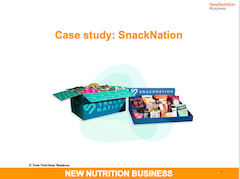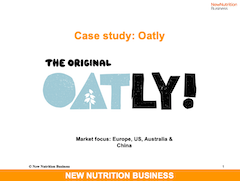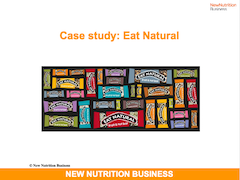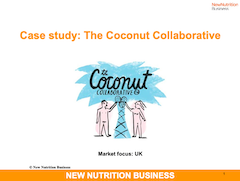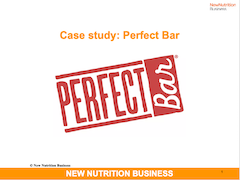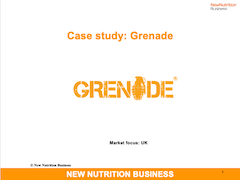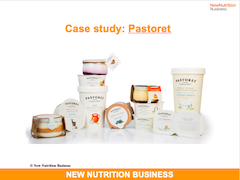Our case studies focus on brands and products that provide lessons from real challenges and opportunities which you can use to inform business strategy. They are packed with detail including brand portfolio, pricing, and communications and marketing strategy, merchandising and distribution, and come with a check list of key lessons learned.
Published: June 2019
Case study: SnackNation
After just four years on the market SnackNation has sales over $17m - much thanks to developing a secondary revenue stream to complement its snack box subscription service. SnackNation is proof that creativity and intelligence goes a long way.
Download powerpointPublished: May 2019
Case study: Oatly
For its first two decades, Oatly was a niche brand with slow growth. Seven years ago that changed, and the brand’s sales have grown by an impressive 285% in the past 10 years. The Swedish brand is now active in major markets like the US and China, and promotes its products mainly on transparency and environmental health platforms.
Download powerpointPublished: May 2019
Case study: Eat Natural
With inspiration from Australia, childhood friends Praveen Vijh and Preet Grewal founded Eat Natural in 1997 without any external funding. The cereal and snack bar brand has invested very little in marketing, yet saw sales reach an all-time high of £34.1m ($43.7m) in 2018.
Download powerpointPublished: April 2019
Case study: The Coconut Collaborative
After eight successful years with dessert brand Gü, James Averdieck entered the plant-based market and launched The Coconut Collaborative together with his brother Edward in 2014. The brand sells over $13m worth of it's coconut-based yoghurts and desserts every year, and launched in the US in early 2018.
Download powerpointPublished: April 2019
Case study: Perfect Bar
Family-run Perfect Bar became the first brand in the US to offer refrigerated protein bars when it launched in 2008. Pioneering a new product concept like this is challenging, but the brand has persisted and is now available in more than 20,000 retailers across the US.
Download powerpointPublished: April 2019
Case study: Beyond Meat
Formed out of a desire to help stop climate change, Beyond Meat has grown to become a $500m+ brand since launch in 2012. The brand has raised over $145 million, with financial backers ranging from Bill Gates to Tyson Foods, and filed for an IPO in November 2018.
Download powerpointPublished: March 2019
Case study: Grenade
With a focus on eye-catching packaging and disruptive marketing, Grenade has grown to become the 9th fastest growing company in the UK. Launched in 2010, the brand now enjoys sales just shy of $50m and its low carb, high protein products are available in around 80 countries worldwide.
Download powerpointPublished: March 2019
Case study: Fresh Fitness Food
Born out of a frustration with the lack of access to tailored nutrition in London, Fresh Fitness Food today serves 10 cities across the UK with personalised meals delivered on a daily basis. With a strong focus on fitness and health the brand targets the busy, health-aware consumer looking to have all their meals personalised and freshly prepared for them.
Download powerpointPublished: February 2019
Case study: Nocco
NOCCO, No Carbs Company, has become the most talked about energy drink brand on the Swedish market. Sales have grown by 893% since launch in 2014, and the brand's BCAA drinks are endorsed by a range of athletes and fitness influencers.
Download powerpointPublished: February 2019
Case study: Pastoret
Family-owned Pastoret has grown to become a $25 million brand and is an excellent example of a brand that has succeeded thanks to the Authenticity & Provenance trend. With great-tasting yoghurt products and modern branding of an artisanal product, the brand has seen impressive sales growth in the past few years.
Download powerpoint
